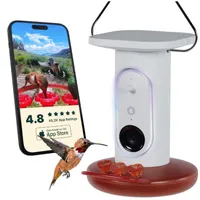How to keep bees out of hummingbird feeders — 5 expert methods to help them thrive
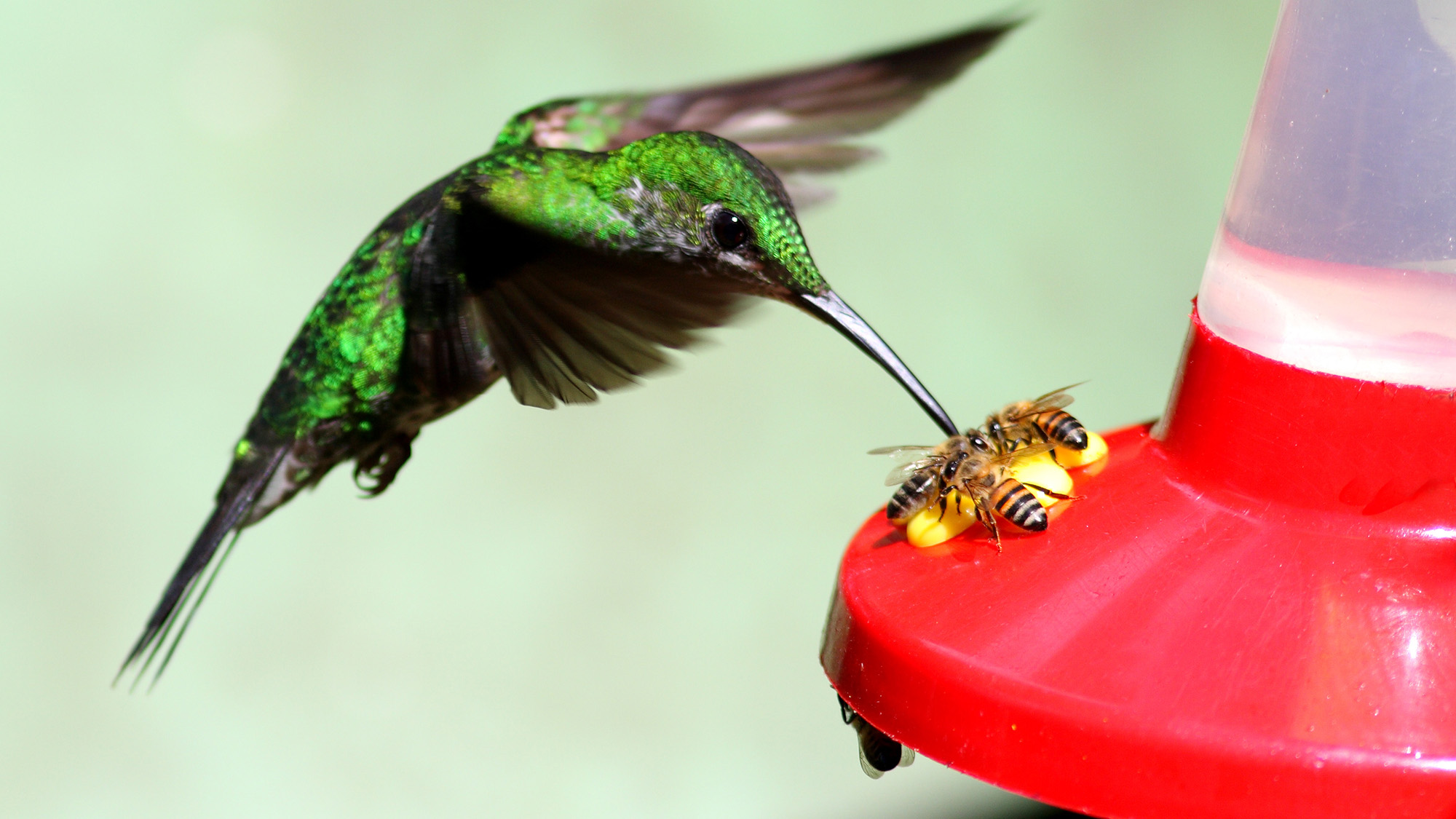
First thing each morning, I sit outside and watch the wildlife visiting my garden. There’s lots of activity to spot. An array of birds swoop down to feed and drink, and there are plenty of insects doing their thing.
And although I feel quite spoiled to be able to enjoy this scene by simply opening my back door, I would love the opportunity to attract hummingbirds to my yard. Unfortunately, hummingbirds are not native to the U.K., so unless I up sticks and move south, this is one birdwatching treat I’ll be missing out on.
But for those of you with more favorable locations, adding a hummingbird feeder to your yard will attract these beautiful birds. But beware, a few insects will follow. Given the chance, bees will dive in and feast on the food, and although we don’t class them as pests, they can prevent hummingbirds from getting their fill and thriving.
I’ve called on the help of wildlife and pest experts to share how to discourage bees from taking over hummingbird feeders without causing them harm, but firstly it’s good to know why we need to protect hummingbirds from bees.
This smart hummingbird feeder provides a safe space for the birds to feed. You can capture video and photos of the tiny backyard creatures and it's all powered by solar energy. The Bird Buddy app then uses Ai to identify hummingbirds and other species, with real-time alerts.
Why you need to deter bees from hummingbird feeders
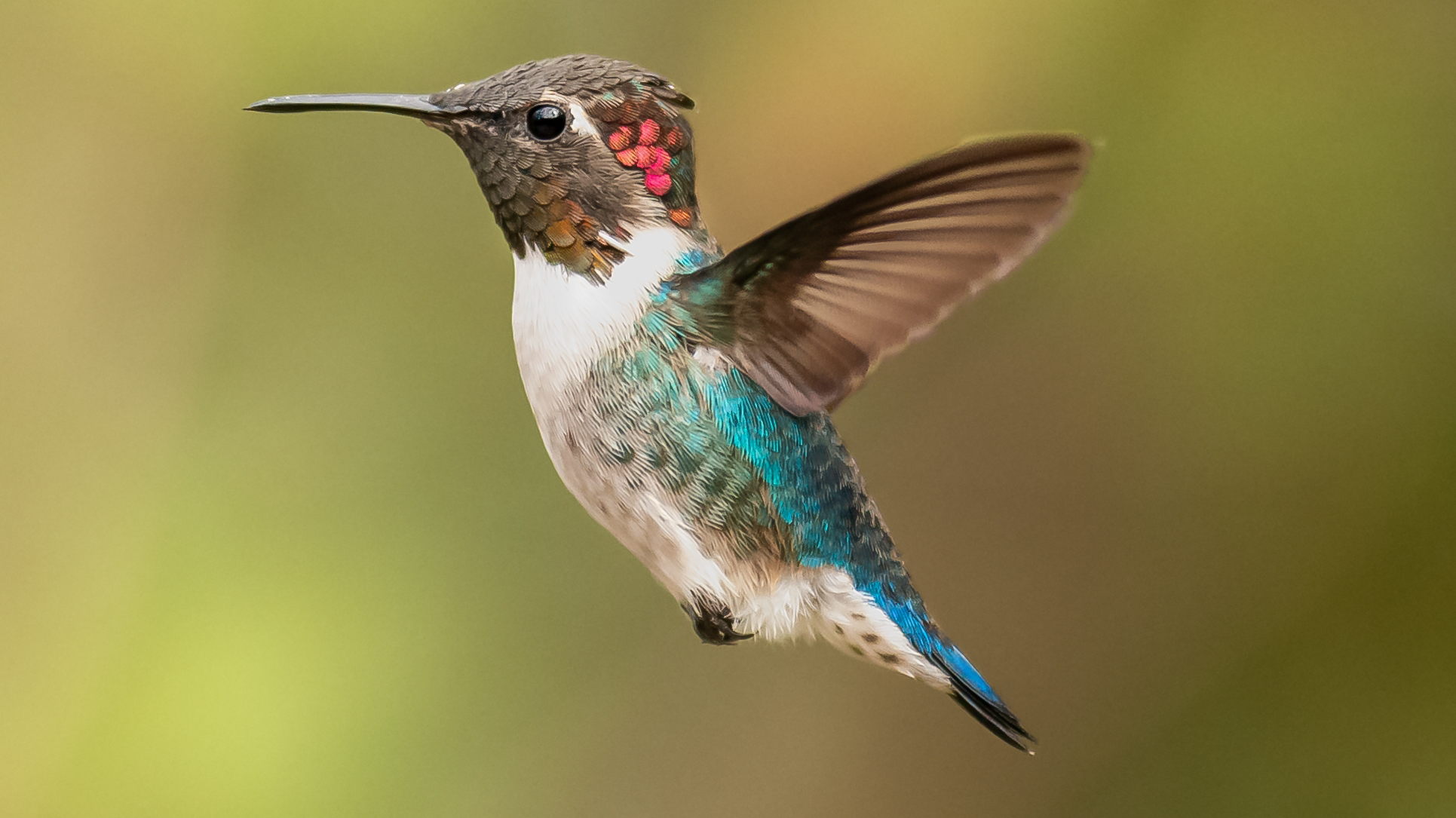
Maria Kincaid, ornithology research specialist at FeatherSnap, says, “Bees, along with wasps and hornets, are attracted to hummingbird feeders because they’re a food source filled with sugary nectar, much like the flowers they are attracted to, just like hummingbirds.”
While Nicole Carpenter, president of Black Pest Prevention, adds, “It’s not just the sugar, it’s the simplicity. Bees prefer low-effort, high-reward sources, and most feeders are basically a fast-food drive-thru.”
With bright red and yellow signage, sugar-rich liquid, and no petals to navigate, they are the perfect feeding stop for bees. In the drought or midsummer, she says hummingbird feeders outcompete flowers in both quantity and accessibility.
Get instant access to breaking news, the hottest reviews, great deals and helpful tips.
Juan C. Rezk, chief marketing officer at Certus, says the presence of bees can deter shyer hummingbirds and that “aggressive bee swarms can stress the birds or even completely dominate the feeder.”
But apart from bees, you'll also want to keep ants out of hummingbird feeders, without causing them harm.
Bees prefer low-effort, high-reward sources, and most feeders are basically a fast-food drive-thru
While Jason Napolski, CEO and President at A-Tex Pest Management, says there is a knock-on effect, as wasps and yellow jackets, which often follow bees to feeders, can also be aggressive and territorial, putting off hummingbirds from feeding.
“Too many bees can overwhelm feeders, scare off hummingbirds, and lead to aggressive swarming,” says Carpenter, adding that the bees can also suffer. “Bees can drown in the nectar, which helps no one, including the hive.”
How to stop the bees eating your hummingbird food
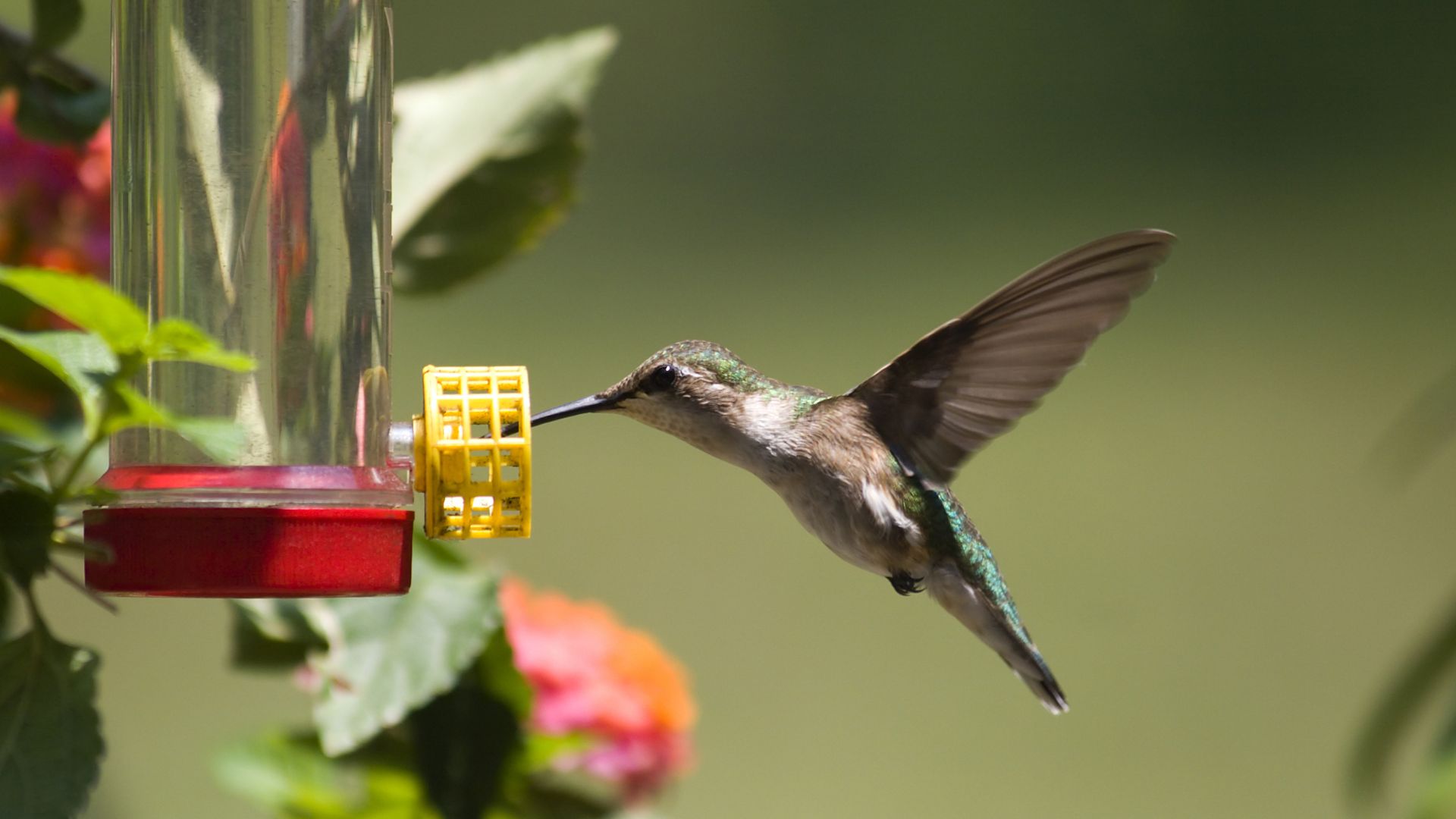
1. Consider your type of feeder
Some types of hummingbird feeders are more difficult for bees to access than others, and Kincaid recommends those with long nectar ports, which make it easy for hummingbirds to access the food, but bees and other stinging insects cannot.
You can also consider a hummingbird feeder with a bee guard, while saucer-style feeders also make it more difficult for bees to access the rich nectar.
Isabelle Manseau, owner at Birdzy, says the color of your feeder will make a difference, as bees love yellow.
She suggests, “Stay away from feeders with yellow components. Use red only if you want to draw hummingbirds.”
If you already have a hummingbird feeder, it’s worth checking it for leaks, with Napolski warning, “Avoid feeders that leak or drip, as even a small spill can attract insects quickly.”
Top tip
If you’ve got a real bee problem, Kincaid suggests moving your hummingbird feeder to a new location, as hummingbirds will move with the feeder, but the bees may not.
Carpenter explains that repositioning will disturb the bees 'memory maps’.
Kincaid also recommends positioning your feeder in a shady location, as bees prefer to feed in full sun.
2. Try scent to deter the bees
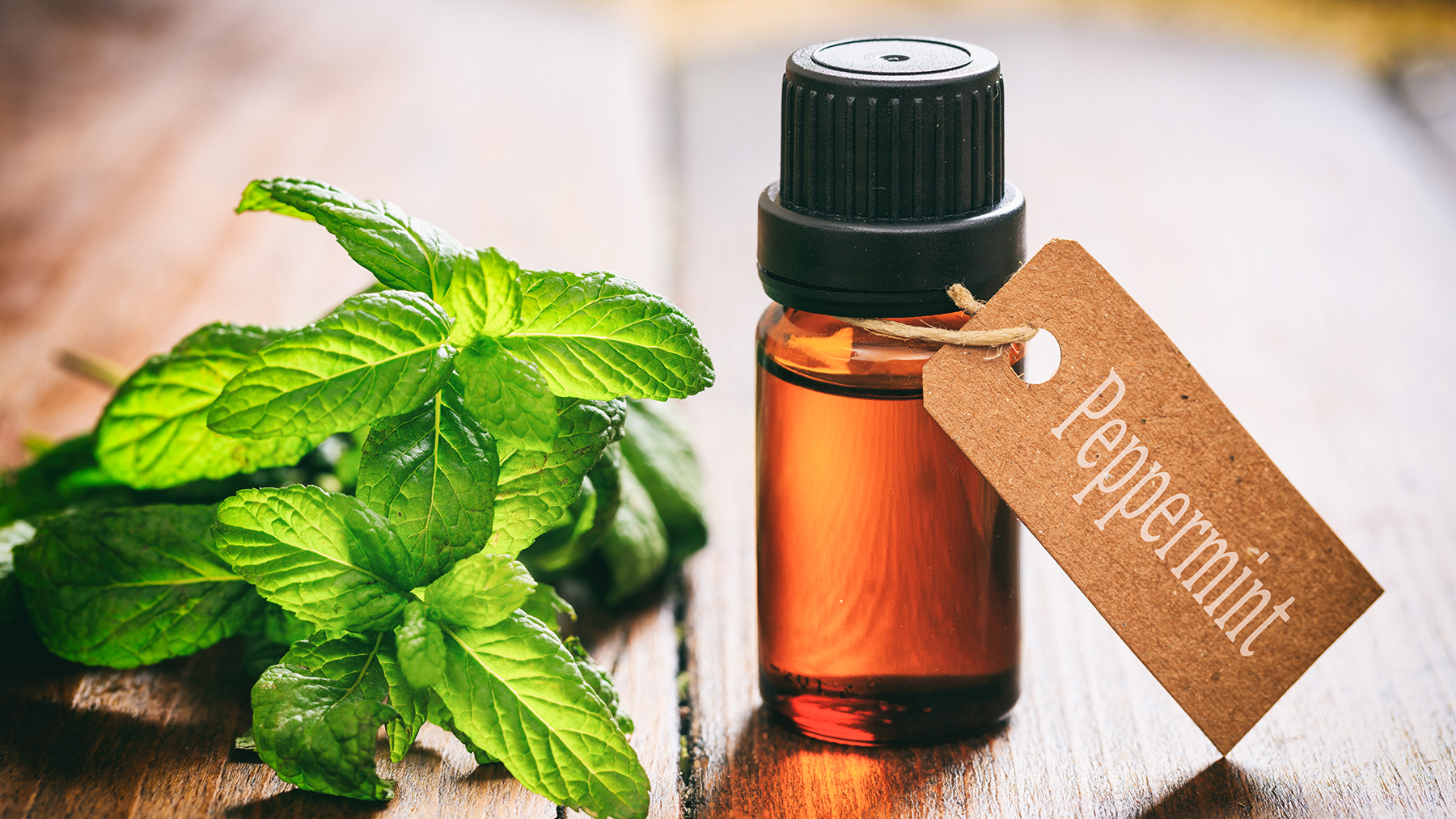
There’s a mixed opinion on whether scent can deter bees from hummingbird feeders or not. Manseau says, “Some people apply vinegar, clove oil, peppermint oil, or cinnamon to nearby surfaces.”
However, she believes it’s not very effective in the long run, particularly after a downpour.
Despite this view, Carpenter says it’s best to go for scent layering, “Bees may tolerate a single strong scent if the nectar reward is high. But combining deterrents, like peppermint oil plus vinegar wipe-downs, creates a sensory overload they won’t push through.”
Napolski also believes it’s worth giving scent deterrents, such as peppermint, eucalyptus, and cinnamon, a try. “You can try placing peppermint oil on cotton balls and tucking them near the feeder to gently deter bees without affecting hummingbirds,” he says, but adds, “Avoid applying oils directly to the feeder ports, as that can repel the birds too.”
3. Visual distractions may help
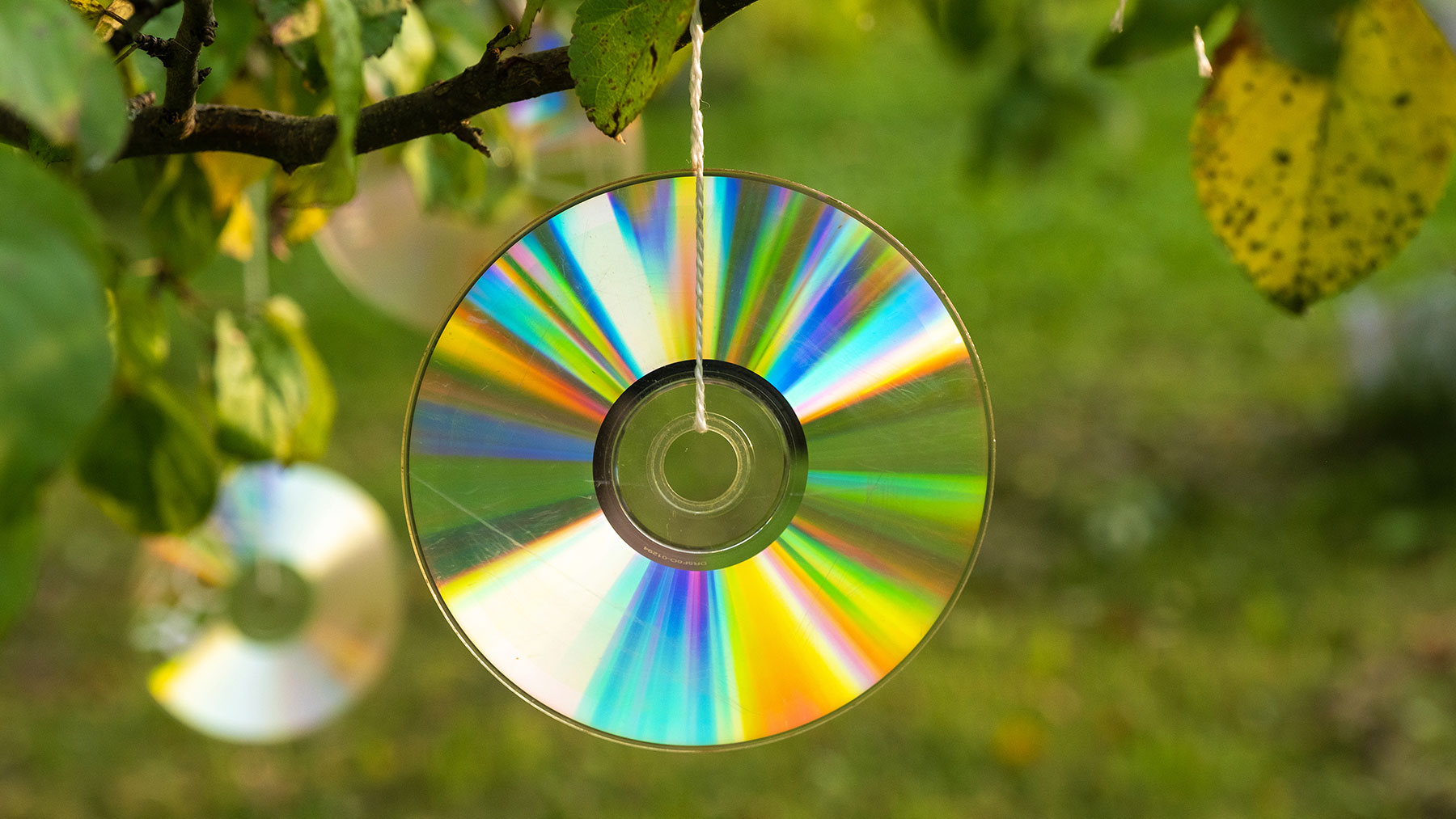
Shiny objects like reflective tape, old CDs, or metallic pinwheels disorient bees
There are plenty of options to deter the bees with visual devices. Carpenter explains, “Shiny objects like reflective tape, old CDs, or metallic pinwheels disorient bees, who prefer a calm, stable visual field.”
She suggests hanging the objects nearby, rather than on the feeder, which might spook the hummingbirds too.
Carpenter also recommends using devices with vertical motion, such as hanging spirals that bob in the wind. “Bees will hate it, while hummingbirds won’t care,” she adds.
4. Keep your hummingbird feeder clean
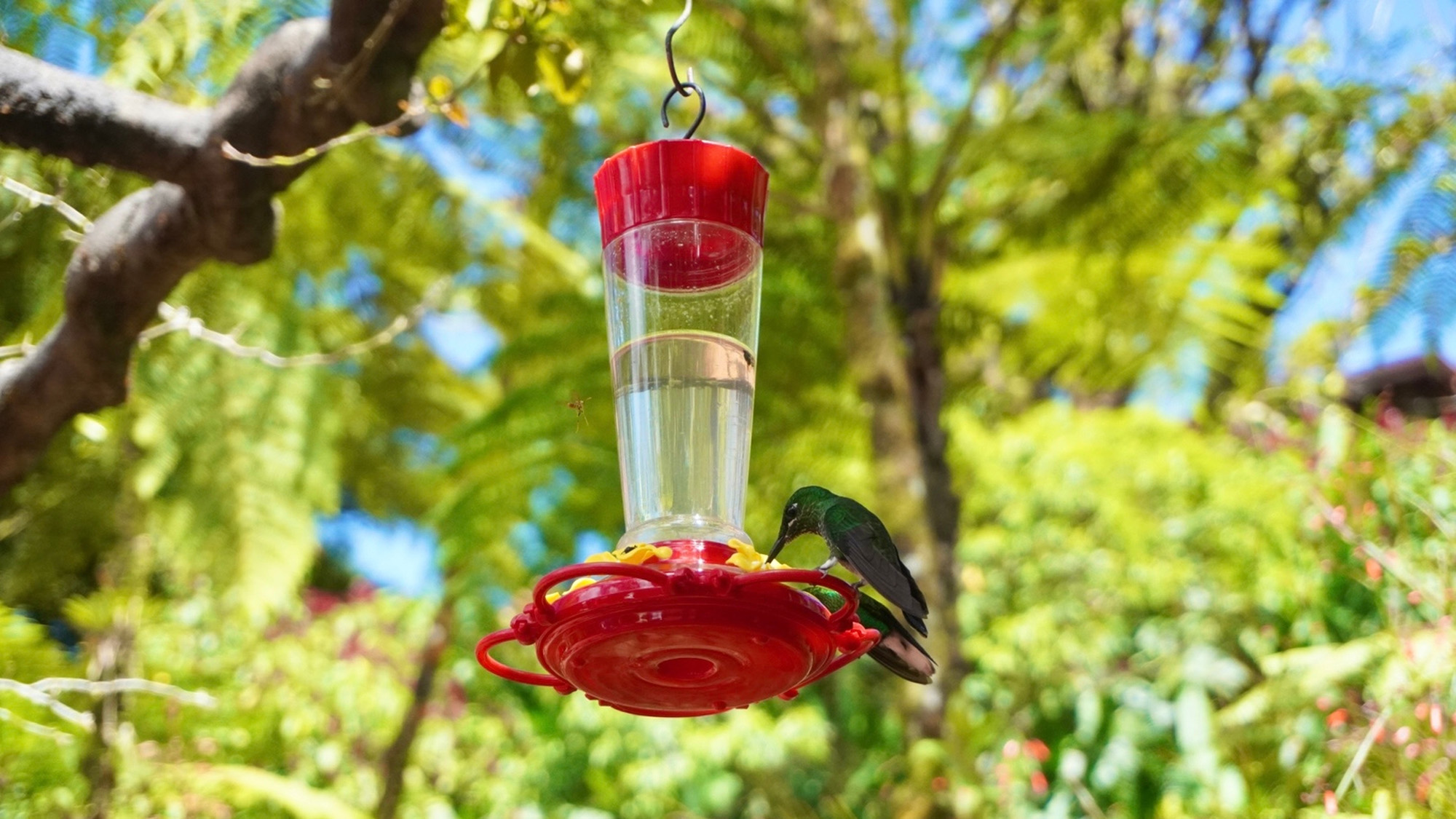
“Regular cleaning and maintenance will not only help keep pests away from your hummingbird feeder, but it’s best for the hummingbirds you’re trying to attract,” says Kincaid.
What’s more, she adds that sugar water can spoil quickly, which can cause mold to grow in the feeder and nectar ports. And, if it begins to ferment, when left too long in the sun, it can harm hummingbirds.
A poorly maintained feeder will always cause a problem. “Leaky, sticky feeders are bee magnets. Cleaning them weekly with hot water, without soap, and checking for loose seals or ports that drip will help you in your war with bees,” advises Carpenter.
By keeping your hummingbird feeder clean, you’ll also be removing pheromone trails, the scent trails that bees leave behind for others to follow.
5. Encourage bees elsewhere
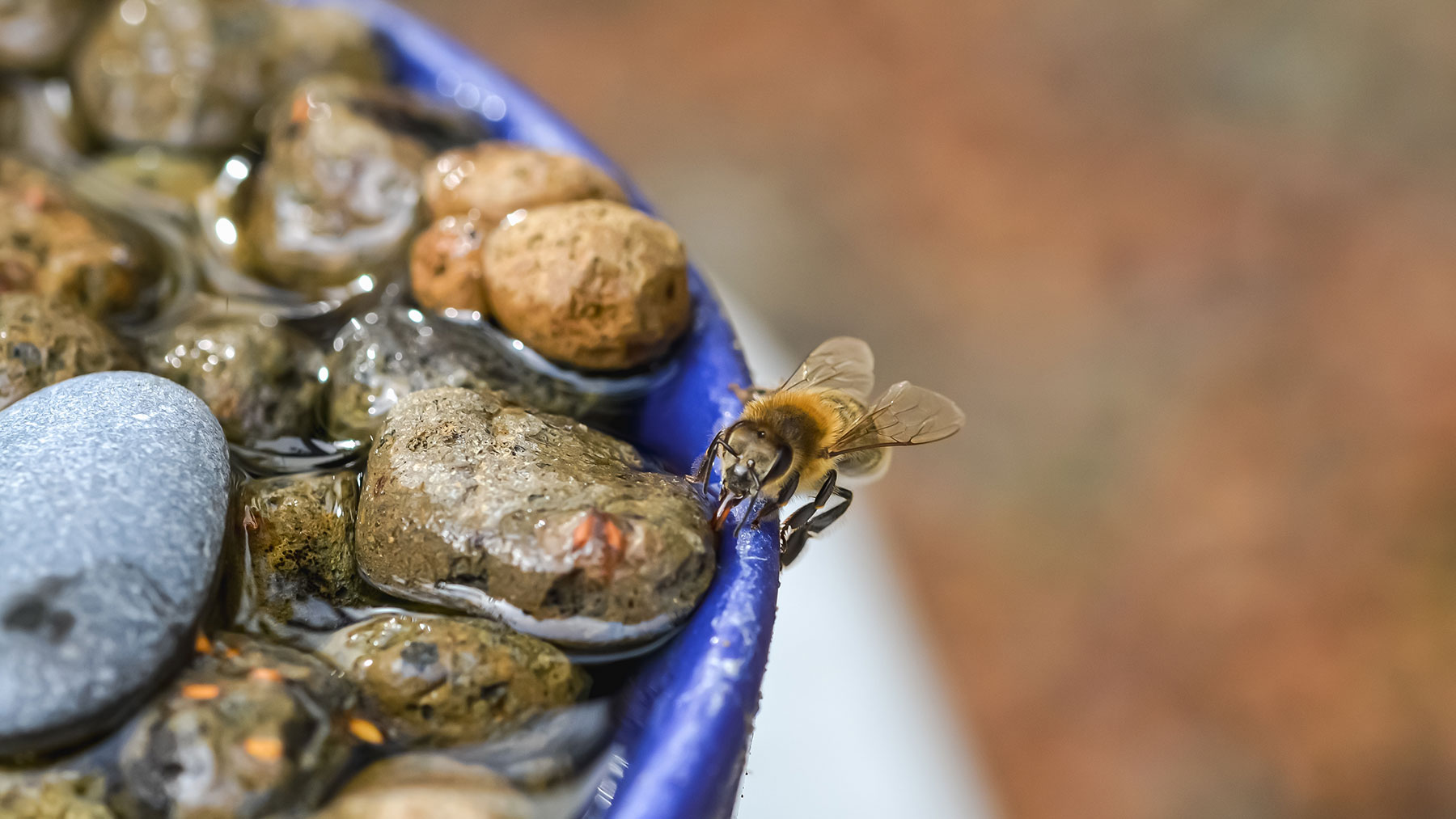
While we want to deter bees from honing in on hummingbird feeders, they still play an important role in the ecosystem of our gardens, so the best solution is to create a bee-friendly zone. Napolski suggests planting bee-friendly flowers, such as lavender, coneflower, black-eyed Susan, and mint, away from the feeder.
“You can also set up a bee watering station — a shallow dish with water and pebbles for them to land on — and place a sugar-water feeder specifically for bees in another part of the garden. This diverts them while supporting their role as pollinators,” he adds.
This 2-pack of Bee Cups, available for $9 at Amazon, could be just the thing to attract bees away from your hummingbird feeder. Opt for bee cups in yellow, purple, and blue — colors that bees love.
Manseau suggests another solution, and says, “Set up a dish with sugar water or fruit away from your feeders. Once bees find and rely on that spot, they’ll stop crowding the hummingbird zone.”
What not to do
Whatever you do, all the experts agree, you shouldn’t use pesticides to kill the bees. Kincaid says, “Insects are an important part of our ecosystem, and while they can definitely be annoying, we need them around.
“Bees are important pollinators, and also important food sources for different species. Along with taking these insects out of the ecosystem, the pesticides used to kill bees can also be directly harmful to birds.”
And pesticides won’t just wipe out one or two bees, Carpenter says; they can destroy whole colonies and harm other pollinators. She also explains that hummingbirds can be affected as well. If they are exposed to neonicotinoids, they won’t die right away, but it will be a slow and confused demise.
More from Tom's Guide
- How to protect your bird feeder from hungry squirrels in 5 steps
- I've discovered the best way to encourage birds into my backyard — and you can too
- FeatherSnap Scout Bird Feeder review

Camilla is the Homes Staff Writer and covers everything to do with homes and gardens. She has a wealth of editorial experience, mounting over 30 years, and covers news and features, tests products for reviews and compiles buying guides.
Her work has appeared in business and consumer titles, including Ideal Home, Real Homes, House Beautiful, Homebuilding & Renovation, and Kitchen & Bathroom Business. She’s even appeared on the cover of Your Home, writing about her own house renovation.
Although she’s obsessed with decorating her home, she also enjoys baking and trying out the latest kitchen appliances. But when she’s not inside, you’ll find her pottering about in her yard, tending to her vegetable patch or taking in her prized hydrangeas.
You must confirm your public display name before commenting
Please logout and then login again, you will then be prompted to enter your display name.
